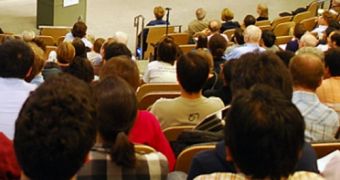Stem cells have for a long time been heralded as the next big thing in medicine, but still a lot of challenged remain to be conquers before they can be used in daily therapies.
The ultimate goal of stem cell studies is to enable healthcare experts to treat patients rather simply. Regenerative medicine places emphasis on using a person's own cells to cure them.
This is done by harvesting certain types of cells, and then making them revert back to a state from which they can differentiate into nearly any type of cell in the human body.
Having such an ability could be extremely useful for several reasons, including the fact that Parkinson's patients could receive new neurons to replace their affected ones. The new cells would also comb from their own bodies.
Because of this, there would be no risk of the transplant being rejected, and also no risk that the patient's immune system would attack the graft.
At this point, transplant patients need to take immunosuppressive drugs for many years after they get a new organ, so as to prevent their bodies from rejecting it. But this also means that they are more prone to infections from external sources.
“This scenario, which seemed like fantasy only a few years ago, is closer to reality,” explains Rudolf Jaenisch, who is a professor of biology at the Massachusetts Institute of Technology (MIT).
The expert spoke at the annual James R. Killian Jr. Faculty Achievement Award Lecture, which was established in 1971 to recognize extraordinary professional accomplishment by MIT faculty members.
Jaenisch is widely considered to be a worldwide pioneer in studying transgenic mice, stem-cell biology, mammalian cloning and regenerative medicine, and is also a founding member of the Whitehead Institute for Biomedical Research.
The scientist reveals that there are now three main obstacles that get in the way of using induced pluripotent stem cells (iPSC) in daily therapies.
The first is the need researchers have of discovering a method for inducing pluripotency in cells without the use of viruses. It is now common practice for these microorganisms to carry the reprogramming genes.
The second obstacle researchers need to pass is to develop a new way of integrating genes into the human DNA. This is relatively easy to perform in mice or other animals, but a lot more complex in our species.
The third issue is developing a way of generating induced pluripotent stem cells from human blood, which is currently impossible. Jaenisch believes that this is truly the way to creating individualized treatments for patients.

 14 DAY TRIAL //
14 DAY TRIAL //